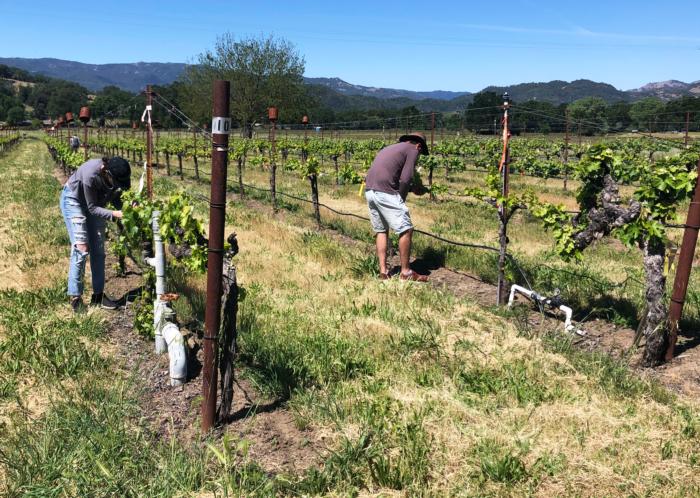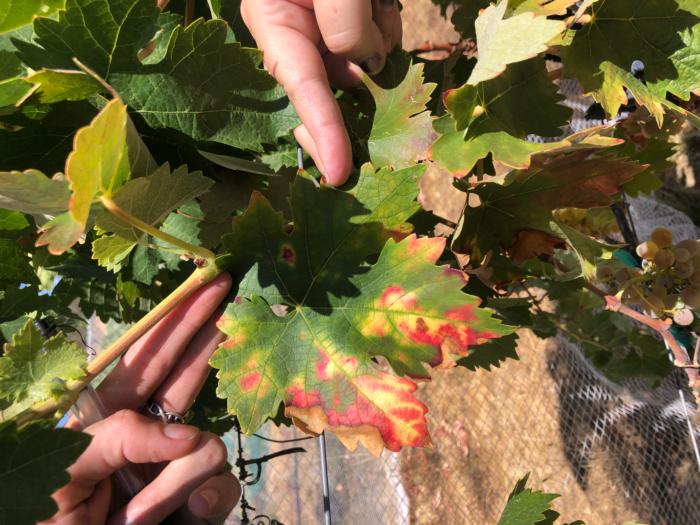Evolution of Grapevine Pathogen Infections

Pierce's disease is an economically important vector-borne disease caused by the pathogenic plant bacterium, X. fastidiosa. As the bacteria grow, the flow of water inside the plant is blocked, causing it to die. Pierce's disease negatively effects grapevines across the United States and threatens the country's $30 billion wine industry. However, it is unclear how the pathogens colonize the plants and how the disease progresses over time.
HREC researchers are currently working to address these knowledge gaps using a 10-year-old vineyard on-site with 14 wine grape cultivars grown under commercially relevant conditions. Overwinter recovery rates are also being studied to assess the potential compounding effects of the disease with climate change. This research is critical to understanding Pierce's disease development and delivering science-based management guidelines to California wine grape growers.
Researcher Spotlight: Monica Donegan

Learn More!
Listen to Monica present on the local adaptations of X. fastidiosa strains in California during the CDFA conference.


